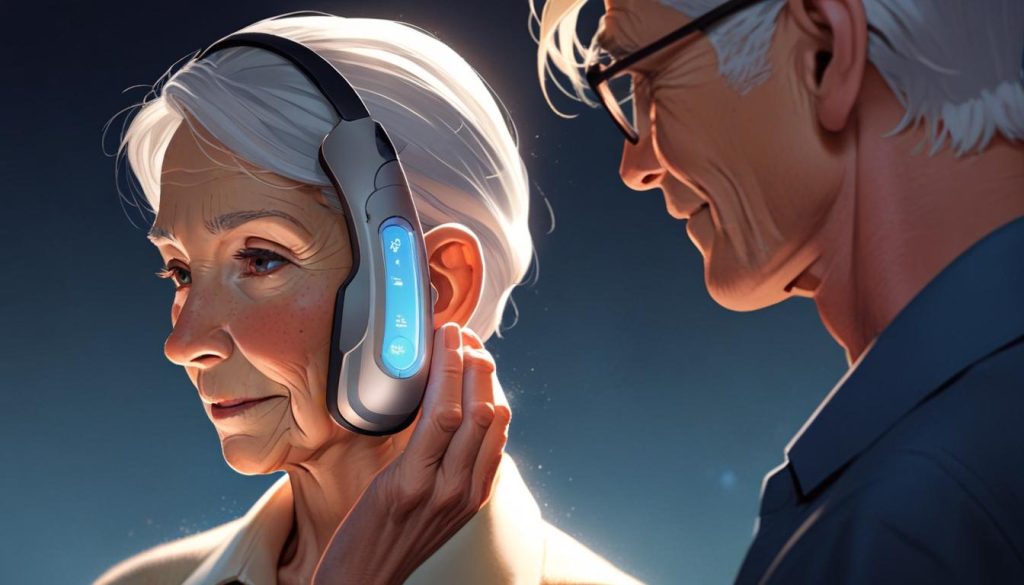Advancements in hearing aid technology are enhancing life quality for those with hearing loss, driven by innovation in AI, smartphones, and 5G.
The landscape of hearing aid technology has witnessed remarkable advancements, significantly enhancing the quality of life for individuals experiencing hearing loss. Notably, digital innovations have integrated smartphone applications, artificial intelligence (AI), and 5G technology to improve functionality and accessibility for users.
Dr. Abe Vore, founder of Eagle Hearing in Idaho, has been a pivotal figure in this evolving field. Diagnosed with hearing loss at only 18 months of age, Vore’s personal experiences have shaped his professional trajectory. “I’ve always known how important hearing is to maintaining a quality of life and being included in what I call the conversation,” Vore said. His background includes education from institutions such as the University of Iowa and Gallaudet University, which focuses on empowering the deaf and hard-of-hearing communities.
Vore’s commitment to improving the lives of those with hearing loss is matched by the rapid technological developments in the sector. The transition from analog to digital has revolutionised how audiologists prescribe and customise hearing aids. Rebecca Taylor, an audiologist at the St. Luke’s Elks Hearing and Balance Center, recalls adjusting devices with tools as basic as an eyeglass screwdriver during her early career. Now, adjustments are made using advanced software that ensures an accurate prescription tailored to each patient.
The integration of AI has led to more sophisticated devices equipped with omnidirectional microphones capable of suppressing background noise and improving the clarity of speech. Taylor noted, “AI learns the speech signal that the person is wanting to hear while it’s in the presence of all this background noise that we in general don’t want to hear.” This makes it easier for patients to focus on conversations in noisy environments.
Moreover, the advent of 5G technology has facilitated remote adjustments for patients, particularly beneficial for those residing in rural areas. For instance, a patient living in McCall can receive real-time modifications to their hearing aids without needing to visit an office, streamlining the process of care.
Real-ear verification (REV) has also become a standard practice, allowing audiologists to measure sound pressure levels directly at the eardrum to ensure accurate amplification of sound frequencies according to individual hearing loss profiles. Vore stresses the importance of professional assessments, stating that inappropriate settings from non-professionals can lead to missed benefits from the devices.
The significance of quality in hearing aids cannot be understated. Both Vore and Taylor advocate for patients to seek out reputable manufacturers, noting that the variances in quality can significantly impact user experience. “With hearing aids, people often don’t know what they’re missing,” Vore remarked, emphasising the need for informed choices in hearing health.
Among those benefiting from these advancements are Ed and Velda Woodstock, a couple who have been married for 57 years. Ed, who will turn 93 in May, has used hearing aids since 1967 and describes the devices as life-changing. “I don’t think I would even be able to exist without hearing aids. It was like being born again,” he said. Velda, who has been reliant on a hearing aid for her left ear for about 30 years, highlights how crucial her device is for everyday activities and maintaining social engagement.
With ongoing research and technological improvements, the future of hearing healthcare appears promising. As Vore notes, “A lot of research and development is going into this technology, and the manufacturers keep improving things every year. I think it will take it to a whole new level.” The continuous evolution of these tools serves to enhance communication for millions affected by hearing loss, reinforcing the integral role of technology in healthcare.
Source: Noah Wire Services





